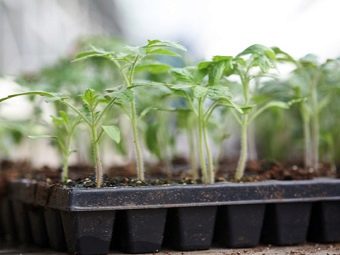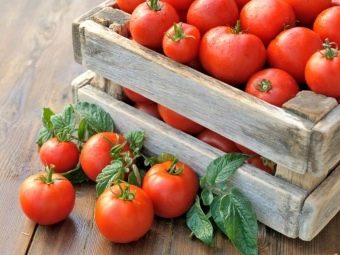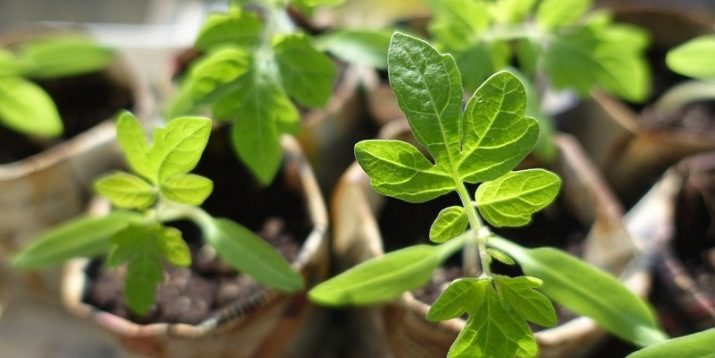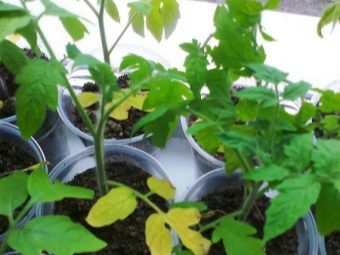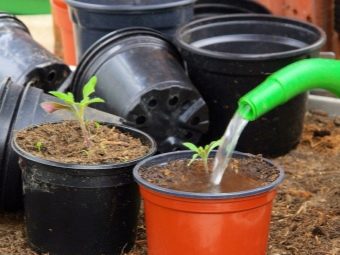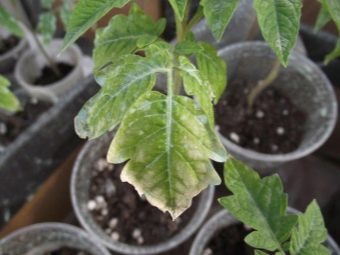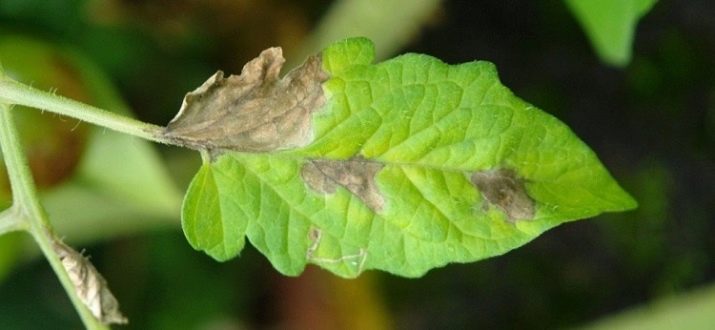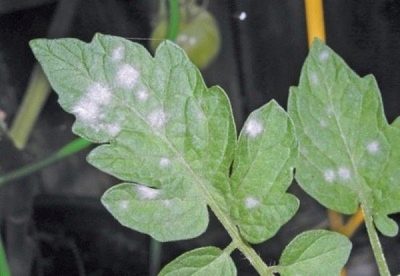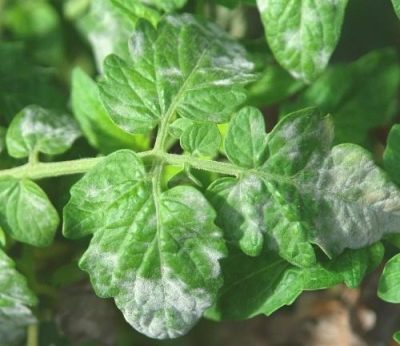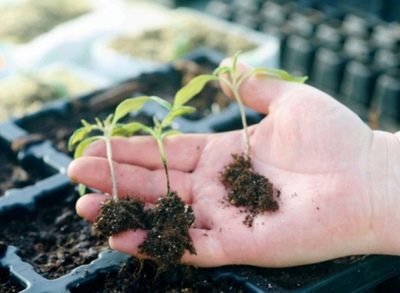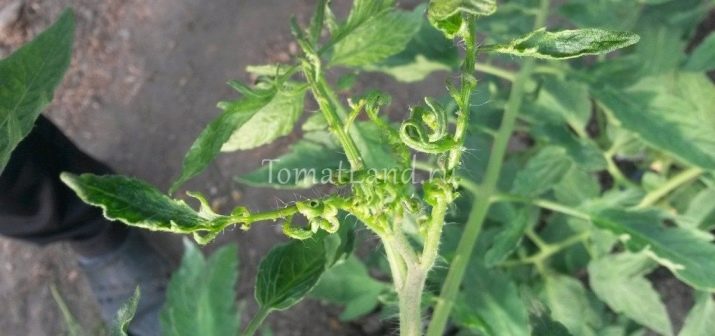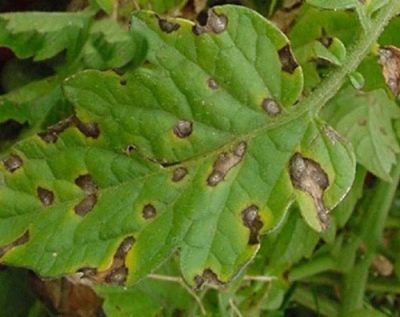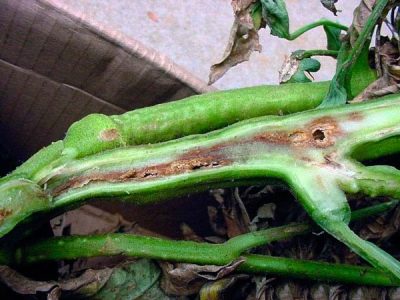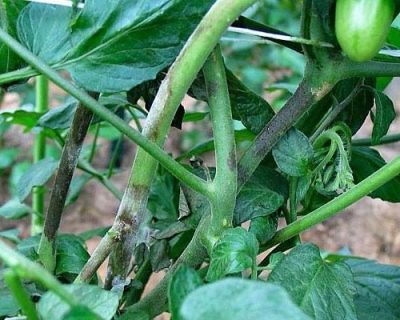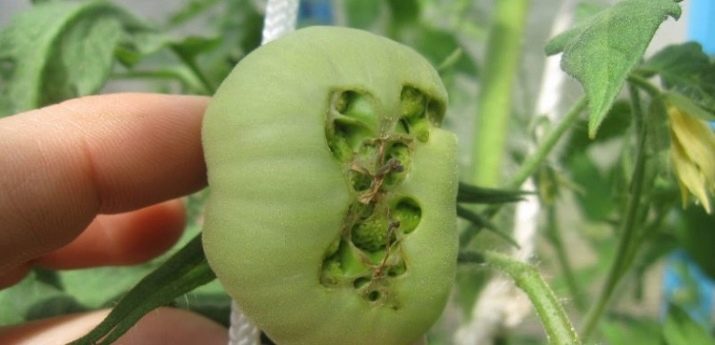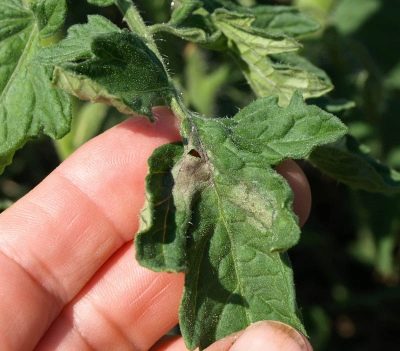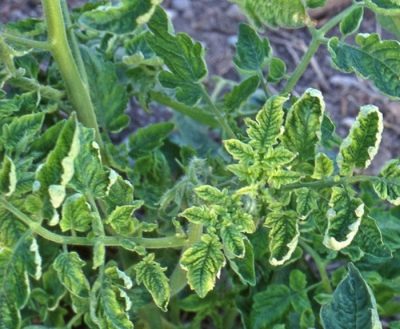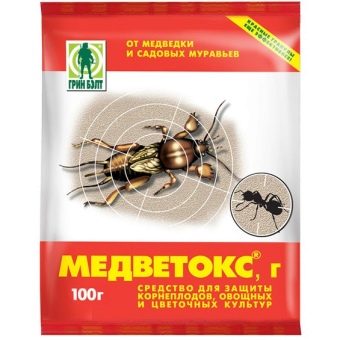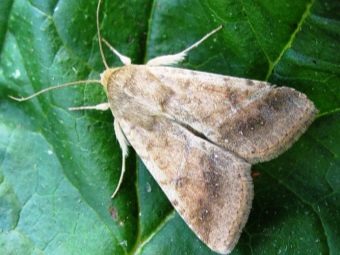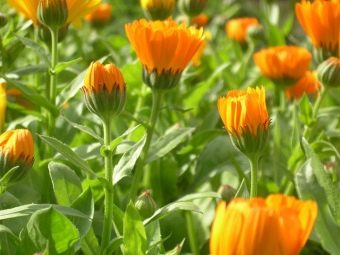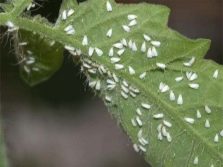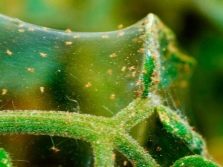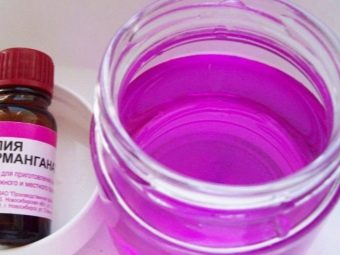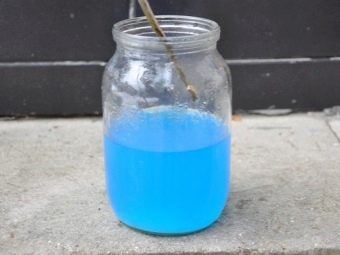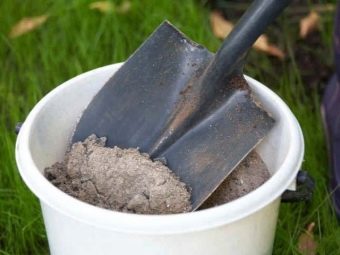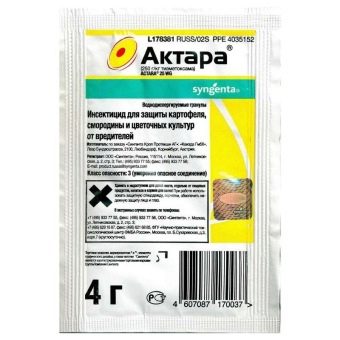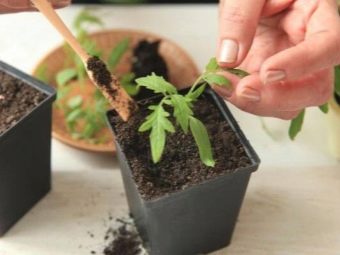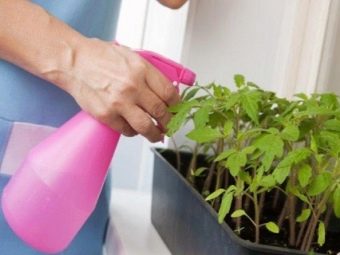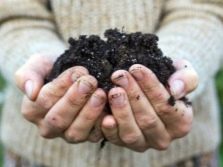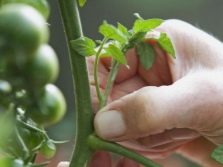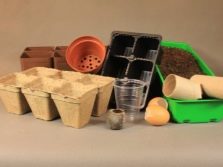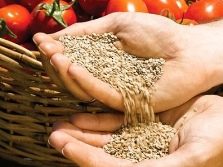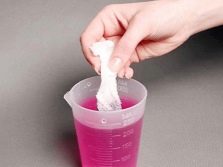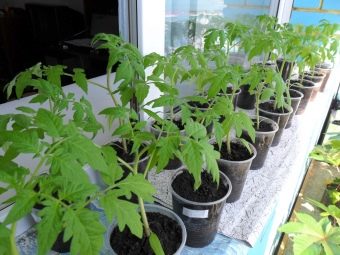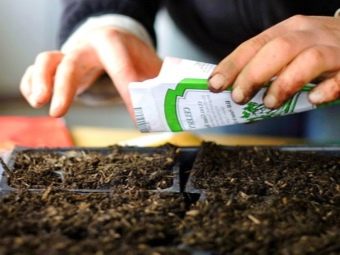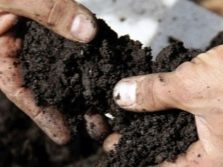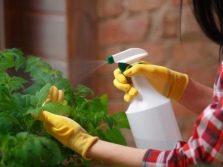Diseases of tomato seedlings: description and treatment
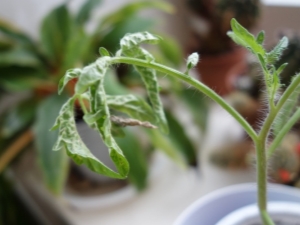
Tomatoes - one of the most popular crops among summer residents.Miraculous vegetable is not only very tasty, but also has great health benefits. However, growing tomatoes is not so easy, especially when they are in the seedling stage.
To get a rich and good harvest, you will have to take into account many nuances, since the seedlings are extremely susceptible to various diseases.
Why sick?
It is a shame when the effort and money spent simply go nowhere. Often in the forums of gardeners, you can see complaints that the seedlings almost immediately die, fade after picking, it is difficult to treat. Unfortunately, everything is so - the seedlings are extremely whimsical, and in order for it to turn into adult plants, you will have to work hard. To do this, it is necessary to understand the main causes of diseases of future tomatoes.
The simplest reason is incorrect selection of the soil for planting. Unlike a human or animal, a plant receives food from the soil in which it is planted, and this soil is not always good. There are two negative sides - the lack of trace elements and their surplus. Both that, and another deforms plants, does them sluggish and lifeless.
There are several signs by which you can determine what is wrong with "pets":
- rotten roots and leaves of irregular shape - the result of a lack of calcium;
- pale and weak plants - catastrophic nitrogen deficiency;
- sluggish, half-twisted leaves - lack of chlorine, the plant suffers from dehydration;
- leaves in small bumps and wrinkles - calcium oversupply;
- yellow leaves - lack of iron, caused by constant feeding with potassium.
As you can see, the causes of diseases can be many. It does not matter whether the seedlings grow in a greenhouse or on a window. It seems to many beginning gardeners that the more they fertilize the plants, the faster the good growth will go, and this is a mistake. To avoid the hassles associated with dressing, buy ready-made soil in specialized stores. Remember that on each package of land must be specified the composition and complete listing of all elements suitable for the cultivation of tomatoes.
In addition to non-communicable diseases, which are caused by a shortage or an excess of minerals in the soil, there are diseases that cause more significant damage. They can be divided into three groups - fungal, bacterial and viral.
- Fungal diseases - due to improper watering. If tomato seedlings are constantly filled with water, this creates a favorable environment for the spread of flowering and fungus. Also, temperature fluctuations have a great influence.
- Bacterial diseases begin to develop under poor conditions - strong humidity and low air temperature. The wrong soil can also contribute.
- Viral diseases transferred from plant to plant and spread very quickly. This problem is one of the most dangerous - the leaves dry, curl and seedlings die quickly. The cause of the virus are infected seeds and soil, as well as numerous pests.
List of tomato ailments
There are a lot of diseases that can attack tomatoes at different stages of development. The description should start with fungal diseases, which are especially common among this culture.
Fungal diseases
Fungus is one of the most frequent pathogens of tomatoes. He begins to function on the leaves, then goes to the stems. The virus gradually eats all the healthy tissue of the plant, and black spots and ulcers appear on the seedlings. In favorable conditions of high humidity, the fungus spreads rapidly throughout the area and infects the last healthy plants. Stopping a developed disease is almost impossible. Among such ailments gardeners distinguish late blight, white spot and black leg. Powdery mildew and root rot are less common.
Late blight - a consequence of high humidity and too thick planting seedlings. The leaves of tomatoes quickly become covered with black spots and dry out. When the soil is wet, the stems die.
White spotting begins to develop on the lower part of the plants. The disease comes from the soil and infects the leaves, causing them to turn black and fall off. The rate of spread of the disease is average, you can recognize it at an early stage and take action.
Black leg - one of the most dangerous diseases. Infected seedlings die within one day. The causative agent provokes the wrong temperature and high humidity. The main features are complete thinning and blackening of the stem.
The marsupial fungus is the causative agent that causes another dangerous disease - powdery mildew. Most often it gets through the soil and attacks the plants immediately after planting. The disease is characterized by the appearance of white bloom, which later turns into necrosis of the entire stem and causes its death.
Thinning of the root and its complete rotting are signs of root rot. The disease occurs in greenhouses with high humidity. Sometimes the first symptoms can be confused with a black leg, but there is still a chance to save the plants.
Bacterial diseases
Bacterial diseases are a consequence of the work of pathogenic bacteria that inhabit seeds and soil. It is extremely difficult to destroy such bacteria, since science has not yet invented sufficiently effective drugs. There are several particularly dangerous diseases - stolbur, bacterial wilt and brown spot. Ailments that rarely occur immediately - bacterial cancer, mottling, black spot.
Stolbur is a disease that insects suffer. The leaves and stems are covered with purple spots, and then coarsen. Prompt treatment will help get rid of the misfortune in the shortest possible time.
The situation is much worse if the plant picks up bacterial wilt. The causes and causative agent of such trouble are unknown. Seedlings begin to fade with each passing day, until it finally perishes. The leaves turn yellow, purple stripes appear on the stems, and the appeared fruits rot and fall.
The reason for the brown spot is the increased humidity of the air and the soil. The pathogen infects the leaves, causing them to become covered with large gray spots. On the lower side of the sheet there is a green patina, which later becomes red. The life of the plant after infection is small.
As in the case of people, bacterial cancer becomes one of the most terrible diseases for seedlings. Bacteria infect tomato vessels, as if eating them from the inside. Unfortunately, there is no cure for such a scourge. All affected plants immediately destroy.
Bacterial mottling begins to develop due to the penetration of pathogenic viruses. A characteristic feature is the appearance of yellow spots on the leaves. After some time, small specks turn into one large, the leaves wither and soon die.
Black spots are the result of high temperatures in the greenhouse. Leaves and stems are covered with small black dots. Dangerous disease is that it can live in seeds and soil for a long time. At first, it is difficult to determine the ailment, since the first signs begin to appear already some time after planting, and sometimes not in the first year.
Viral diseases
Viruses can spread in different ways - through the air, through infected seeds and soil, with the help of insects. Immediately determine that the seedlings are sick, it is difficult. Gardeners recommend before picking and disembarking carefully inspect each bush, so as not to miss the beginning of the disease. Fortunately, there are not so many pathogen viruses, and they provoke diseases such as aspermia, streaks, and mosaics.
Aspermia causes almost complete sterility of the plant. The leaves become small, the seedlings are deformed and stop developing.The resulting fruits are small, irregular in shape, the seeds inside are completely absent.
Strick is characterized by the appearance of brown stripes on the stems of tomatoes. A little later, these strips turn into sores, and the seedlings become fragile and brittle. The virus is rarely parasitic in the soil, the main way to move - through the air.
Mosaic is a rare but possible disease of tomatoes. Some leaves of seedlings turn white, combine with elements of normal color and form a mosaic. The affected plants quickly dry out and die. This virus lives in infected seeds.
Pests
In addition to the huge number of diseases that attack seedlings at all stages of its development, we should not forget about the harmful insects. Pests are divided into two categories - underground and aboveground.
Underground
The most dangerous and unpleasant insect pest is the bear (Kapustianka). Medvedka is widely known among gardeners not only for gluttony, but also for its repulsive appearance. Prefers an insect to a moist soil, and begins to parasitize in it even in the larva stage. Kapusyanka nibbles the underground part of the plant, so that the seedlings quickly become shallow and die. It is very difficult to fight the pest, because even after complete destruction it appears again.
Among the drugs that can help cope with the scourge - "Medvetoks", "Thunder", "Bankol". There are other methods of struggle that do not include chemistry. Limit dressing with grasswort in your area - the damage from the bear will be significantly less.
Loosen the soil in time and destroy the insect's eggs. It will be a good idea to plant marigolds in the garden - such plants will also contribute to the fight against the capricious.
Another underground pest of tomatoes - wireworm. Insect loves roots and stems, and constantly gnaws them. The best method of destruction is to pick up a few root crops, for example, potatoes or carrots, and bury them in the ground near the seedlings. Three days later, the vegetables must be unearthed and burned. Well help and drug "Basudin." Mix it with sand and bury around the perimeter of the garden.
Overhead
One of the aboveground parasites, constantly damaging the plants - scoop. This caterpillar is an exclusively nocturnal insect that appears from the eggs of moths. Initially, the caterpillar lives on the leaves, slowly nibbling them, then descends down the stem, continuing to feed on the plant. The last stage - damage to the fruit.
Unfortunately, the scoop is active throughout the season - from the beginning of May until the end of September, therefore, the process of growth of seedlings will have to be constantly monitored. It is easy to detect the pest - put a jar of sour fruit or kvass in a greenhouse at night. The butterflies found the next day are a weighty argument for action.
A good option is to plant a calendula that has antiseptic properties. You can also make an infusion of cloves of garlic or burdock, and from time to time they process the seedlings.
Very dangerous for tomatoes and whitefly. Most often, the insect is wound up in greenhouses, and in the southern regions - and in open areas. The appearance of the pest is characterized by a black viscous coating on the leaves. The stems are also covered with a kind of film that blocks the plant access to oxygen. The affected areas need to be washed with soapy water, but this does not always provide significant assistance. A good idea would be the infusion of fresh dandelions, which need to endure for several hours, and then spray them plants.
Less common aboveground parasites are aphids, bug bugs, spider mites, Colorado beetles.
Cultivation and care
Caring for tomatoes includes not only regular weeding, pasynkovanie and watering, but also the treatment of emerging diseases.
How to treat?
The main treatment for tomatoes is the rapid isolation of the affected specimens, and in frequent cases, their destruction.However, it is possible to try to save diseased plants with the help of chemical medical preparations.
Treatment of late blight should occur as follows - all infected shoots are removed, and healthy sprayed means "Barrier". After 20 days, the procedure is repeated, but another medicine is used for this - “Barrier”. At home, it is easy to prepare a healthy infusion that destroys the fungus well - a glass of cloves or garlic stalks is ground, mixed with a few grams of potassium permanganate and diluted in a bucket of water. You can use other folk remedies for spraying - for example, saline (1 cup of salt is diluted in a bucket of water).
White spot is well treatable with 1% copper sulfate solution. The drug is sprayed with healthy seedlings, the patient is removed. Before planting, seedlings can be prevented - the earth is treated with a solution of manganese and well sprinkled with ashes.
Black leg is a dangerous disease, and it is better to prevent it than to cure it. The soil is treated with a solution of copper sulphate and covered with ashes. Before planting seedlings, inspect them for weak and frail plants. Such copies must be immediately destroyed.
Mealy dew can cause significant damage to all plants, if the affected shoots are not removed quickly. Before planting seedlings, the soil is well poured with a solution of manganese, and the seeds are soaked in disinfectants. If the disease is still manifested, the tomatoes are treated with Topaz.
Any kind of rot is very afraid of trichodermina - with this solution it is necessary to spray the soil well a few days before planting. Already the disease is treated with copper oxychloride - in a bucket of water, 40g of the drug is diluted and the plants are carefully treated. Dry and diseased leaves are removed.
For the prevention of stolbur seedlings still at home can be processed "Aktara". Do it twice - 25 days after sowing and before planting plants in greenhouses.
Bacterial wilt is extremely difficult to treat. The only method is the collection and burning of diseased leaves and stems. Healthy plants must be sprayed with Fitoflavin.
At the first signs of bacterial cancer, not only the diseased plant, but also the soil in which it was located will have to be thrown away. There is no treatment, but you can save the seeds from the disease in advance. To do this, they are soaked in a formalin solution.
Brown and black spots are treated relatively equally. Having found the disease, they immediately destroy the affected shoots, and the remaining healthy plants are treated with Bordeaux mixture. Bacterial mottling is treated with blue vitriol.
Even more difficult is the case with the recovery of plants that have picked up viral ailments. Unfortunately, the treatment exists only for the mosaic. All diseased seedlings are immediately removed, and the remaining tomatoes are sprayed with potassium permanganate or urea solution. Aspermia and strick are not treated, the correct solution would be to simply destroy all the affected shoots and replace the soil with a new one.
Prevention
As can be seen from the description of diseases and pests, the cultivation of tomatoes does not seem easy. The first thing any gardener should do is sterilize the containers, and the seedlings will grow. Banks, bottles, wooden boxes are carefully washed, remove all contaminants and are kept in a solution of potassium permanganate for several hours. Clay containers can be ignited over a fire.
When buying seeds and soil, try to choose proven manufacturers. Grandmothers, selling seeds, is, of course, cheap and cheerful, but do they have a guarantee of quality? Before buying, be sure to inspect the packaging with the soil, each of them should be the composition and recommendations. If not, you should not buy such land. Proper soil is almost half the success of growing a healthy crop.
Many gardeners pity the plants that caught the disease.It is not always advisable to immediately destroy the shoot, you can transplant it into another container and isolate it from seedlings. Also a good solution would be to immediately keep the containers away from each other.
Remember that the first should undergo the treatment of healthy shoots, and only then you can start to sick. Wash hands thoroughly after handling each container.
The best protection for seedlings is optimal environmental conditions. Excessive humidity, high air temperature, stuffiness - all this can serve as a platform for the rapid development of diseases. It is impossible that the containers were in a draft, but light airing does not hurt. Before planting seedlings a good solution is to pour the soil with a disinfecting solution, or use the one on which healthy tomatoes have been growing in recent years.
A prerequisite for the prevention of disease is toadling tomatoes. By removing excess stems and leaves in a timely manner, you will provide seedlings with air flow. Too dense planting will not bring anything except favorable conditions for the reproduction of bacteria. Several times during the season, primer is treated with Bordeaux liquid or copper sulphate as a preventive measure.
Tips experienced gardeners
Many gardeners and gardeners talk about personal experience of growing tomatoes and give a variety of tips to beginners.
The first thing worth mentioning is the maintenance of cleanliness and hygiene. Tomatoes are the same living organism as an animal or human, and they cannot grow in dirty containers. Experts recommend washing and disinfecting all containers well. Much has been said about the quality of the soil in which future tomatoes will be located. If you took the soil from your hands, then it is worth pouring it with potassium permanganate or boiling water.
Other tips concern seed treatment even before sowing. Most gardeners believe that this is a necessary action that will help prevent a lot of dangerous diseases. Seeds are recommended to soak in formalin or treat with extract of potassium permanganate. Those who want quick shoots, can hold future seedlings in growth promoters.
Good results are brought also by hardening of seeds. Few people know about this procedure, and in fact it makes the seed material is much healthier and more resistant to the penetration of bacteria. You can begin to harden after the emergence of shoots - containers with seedlings are taken out into the open air. Initially, 20 minutes is enough, gradually increasing the time. It is not advised to take out the seed container in too cold or rainy weather.
A lot of recommendations are addressed to those summer residents who believe that the more seedlings, the richer the crop. This is one of the most common mistakes. Density of crops will not bring anything, except an excellent environment for reproduction of pathogenic viruses. Sucking the vital juices of each other, deprived of oxygen, the plants will begin to quickly decay and wilt. The distance between the rows should not be less than 60 cm.
An important condition is the temperature not only of air, but also of the soil. In no case can not plant the seeds in the cold, not warmed land. The seedlings will germinate for a long time, get sick and take root poorly, and may even die. In the greenhouse absolutely should not be blown areas. Seal all the gaps and holes in the material, close the vents.
It is not recommended to install a barrel with water directly in the greenhouse - it is better if it will stand on the site in a sunny place.
Compliance with the recommendations for proper watering will also increase the chances of obtaining a healthy crop. High humidity of the soil and air is an open door for fungus, so water gently. For watering use only warm, infused water in the sun. Try to keep the liquid from falling on the leaves and stems; it is better to water it with a hose or a watering can closer to the roots of the plants. In cold and rainy weather the supply of water should be minimized or even stopped temporarily.
Many gardeners give advice and how to react if it seems to you that tomatoes are about to get sick. The correct solution is to quickly reduce the humidity of the air to at least 60%. Thus, the affected plants themselves die, and healthy ones do not catch the disease. It is also important to use folk remedies - spraying milk solutions and infusions of arrows of garlic are useful to tomatoes. Such simple preventive measures will help to preserve tomatoes for a long time and get a decent harvest.
On how to determine the disease of tomato on the sheet, see the following video.

